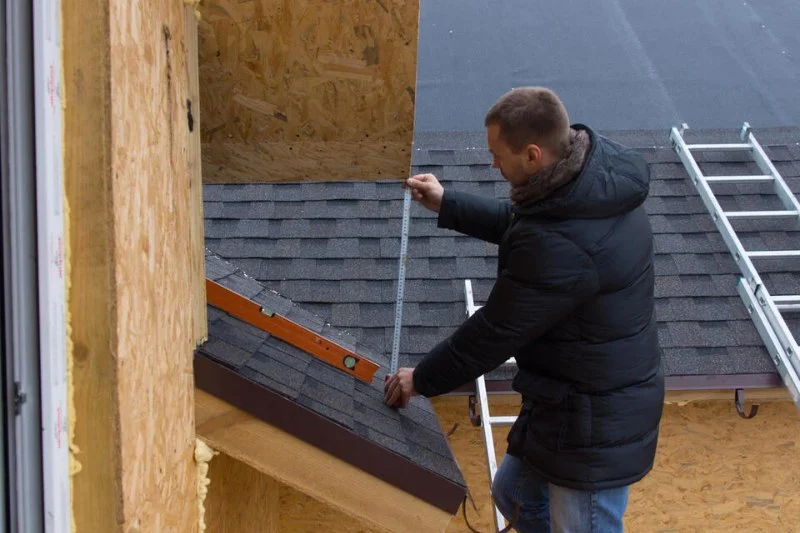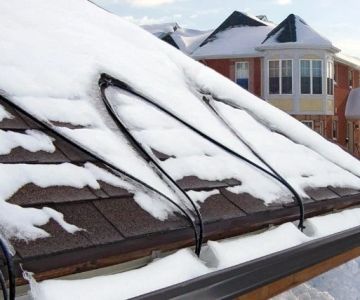
- 1. Understanding Roof Pitch
- 2. Why Roof Pitch Matters
- 3. How to Calculate Roof Pitch
- 4. Tools Needed for Roof Pitch Calculation
- 5. Common Roof Pitch Types and Their Uses
1. Understanding Roof Pitch
Roof pitch, also referred to as roof slope or angle, is a measurement of how steep a roof is. It is typically expressed as a ratio of the rise (height) to the run (horizontal distance). For example, a roof with a 6:12 pitch means that for every 12 inches of horizontal run, the roof rises 6 inches. Understanding roof pitch is crucial for determining water drainage, roofing material suitability, and overall roof design.
In general, the pitch of your roof impacts both its functionality and appearance. It can also affect the cost and complexity of roofing installation. Homeowners often need to calculate roof pitch for various reasons, such as repairing or replacing roofing materials, assessing potential structural needs, or simply understanding the roofing design better.

Pappas Roofing and Construction
Silver SpringMontgomery CountyMaryland
726 Silver Spring Ave, Silver Spring, MD 20910, USA
2. Why Roof Pitch Matters
Roof pitch plays a significant role in the durability and efficiency of a roof. The steeper the pitch, the better it is at shedding rainwater and snow, which can help prevent moisture buildup that might lead to leaks or structural issues. Additionally, certain roofing materials are better suited for specific pitch types, and pitch can influence your home’s energy efficiency.
For example, roofs with steeper pitches are ideal for areas with heavy rainfall or snowfall, as they allow water and snow to slide off easily. On the other hand, low-pitch roofs are often used in regions with minimal precipitation, as they offer better stability and are easier to maintain. Choosing the right roof pitch can also impact insulation effectiveness, especially in colder climates where snow can accumulate.

Yocum Roofing & Siding Inc
EaglevilleMontgomery CountyPennsylvania
48 S Trooper Rd, Eagleville, PA 19403, USA
3. How to Calculate Roof Pitch
Calculating roof pitch can seem complicated at first, but it is actually quite simple once you break it down. There are a few key methods to measure the pitch of your roof, and here we’ll cover the two most common ways:
Method 1: Using the 12-Inch Rule
This is the most straightforward method. To calculate the roof pitch, simply measure the vertical rise and horizontal run of the roof, then divide the rise by the run. The most common standard for measuring roof pitch is to use a 12-inch horizontal run as the baseline. Here’s the formula:
Roof Pitch = Rise / Run (typically measured at a 12-inch horizontal run)
For example, if your roof rises 6 inches for every 12 inches of horizontal run, your roof pitch is 6:12. The first number represents the rise, and the second number represents the horizontal run.
Method 2: Using a Roof Pitch Gauge
If you prefer a more precise method, you can use a roof pitch gauge. This simple tool allows you to measure the angle of your roof directly. By placing the gauge against the roof and reading the angle, you can easily calculate the pitch. A pitch gauge is particularly useful for steeper roofs where measuring rise and run manually can be challenging.
4. Tools Needed for Roof Pitch Calculation
To accurately calculate roof pitch, you’ll need a few basic tools:
- Tape Measure: To measure the rise and run of the roof.
- Level: To ensure your measurements are level and accurate.
- Roof Pitch Gauge (Optional): For a more precise angle measurement.
- Calculator: To perform the pitch calculation (if not using a pitch gauge).
These tools are essential for ensuring the accuracy of your roof pitch calculations, which are critical for roofing installation or repairs. If you're unsure of your measurements, consider reaching out to a professional roofer who can assist you in calculating the pitch correctly.
5. Common Roof Pitch Types and Their Uses
Once you have calculated your roof pitch, it's helpful to understand the most common types of roof pitches and when they are used. Here are a few examples:
- Low Pitch Roof (1:12 to 4:12): Common in mild climates with minimal rainfall or snow. These roofs are typically easier to install and maintain but may require more frequent inspections for water drainage.
- Medium Pitch Roof (5:12 to 7:12): The most common roof pitch found in residential homes. It is suitable for most climates and allows for better water runoff without being too steep.
- High Pitch Roof (8:12 and above): Often found in areas with heavy snowfall or rain. These roofs shed water and snow efficiently but can be more expensive to install due to the steeper angle.
Each roof pitch has its advantages depending on your local climate and the materials you wish to use. Understanding the roof pitch types helps homeowners make informed decisions about their roofing needs.







 Marbin General Contractor Llc0.0 (0 reviews)
Marbin General Contractor Llc0.0 (0 reviews) Power Roofing Bay Ridge Brooklyn5.0 (33 reviews)
Power Roofing Bay Ridge Brooklyn5.0 (33 reviews) EHI Roofing3.0 (19 reviews)
EHI Roofing3.0 (19 reviews) Richard Jackson Spouting Inc4.0 (16 reviews)
Richard Jackson Spouting Inc4.0 (16 reviews) Brooklyn Contracting Group Corp.4.0 (37 reviews)
Brooklyn Contracting Group Corp.4.0 (37 reviews) Barrys Waterproofing and Roofing4.0 (18 reviews)
Barrys Waterproofing and Roofing4.0 (18 reviews) How to Identify and Repair Roof Damage from Sea Spray in Coastal Homes
How to Identify and Repair Roof Damage from Sea Spray in Coastal Homes How to Install Roof Snow Fences to Control Drifting – A Step-by-Step Guide
How to Install Roof Snow Fences to Control Drifting – A Step-by-Step Guide What is a Roofing System Health Report? A Proactive Assessment Tool
What is a Roofing System Health Report? A Proactive Assessment Tool How to Install Roof Ice Melt Systems to Prevent Ice Dams
How to Install Roof Ice Melt Systems to Prevent Ice Dams How to Install Roof Underlayment for High-Wind Roofs: A Step-by-Step Guide
How to Install Roof Underlayment for High-Wind Roofs: A Step-by-Step Guide The Benefits of a Roofing Manufacturer's Approved Installer Program
The Benefits of a Roofing Manufacturer's Approved Installer Program